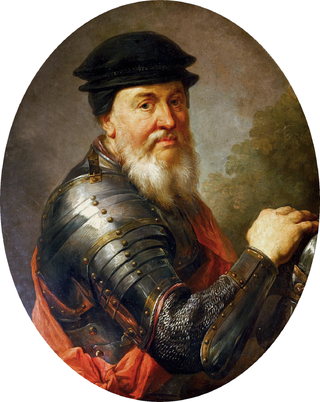
Hetman is a political title from Central and Eastern Europe, historically assigned to military commanders. First used by the Czechs in Bohemia in the 15th century, it was the title of the second-highest military commander after the king in the Crown of the Kingdom of Poland and the Grand Duchy of Lithuania from the 16th to 18th centuries. Throughout much of the history of Romania and the Moldavia, hetmans were the second-highest army rank. In the modern Czech Republic, the title is used for regional governors.
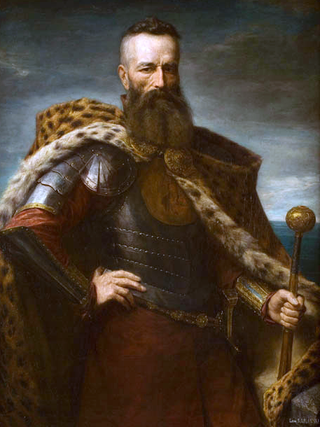
Stefan Czarniecki was a Polish nobleman, general and military commander. In his career, he rose from a petty nobleman to a magnate holding one of the highest offices in the Commonwealth, something that was unprecedented in the Commonwealth's history. On 22 July 1664 he received the office of the Voivode of Kijów and on 2 January 1665, a few weeks before his death, he was given the office of Field Hetman of the Crown of the Polish Kingdom. He is remembered as an accomplished military commander, and regarded as a Polish national hero. His status in Polish history is acknowledged by a mention of his name in the Polish national anthem.
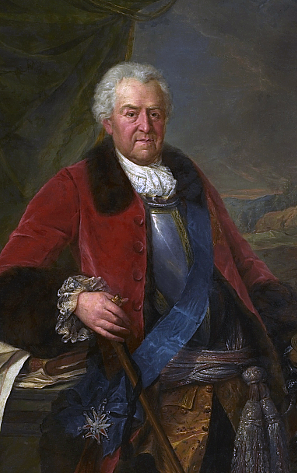
Stanisław Poniatowski was a Polish military commander, diplomat, and noble. Throughout his career, Poniatowski served in various military offices, and was a general in both the Swedish and Polish–Lithuanian militaries. He also held numerous civil positions, including those of podstoli of Lithuania and Grand Treasurer of the Lithuanian army in 1722, voivode of the Masovian Voivodeship in 1731, regimentarz of the Crown Army in 1728, and castellan of Kraków in 1752. Throughout his lifetime, he served in many starost positions.

Prince Jeremi Michał Korybut Wiśniowiecki, nicknamed Hammer on the Cossacks, was a notable member of the aristocracy of the Polish–Lithuanian Commonwealth, Prince of Vyshnivets, Lubny and Khorol in the Crown of the Kingdom of Poland and the father of the future King of Poland, Michael I.

Józef Potocki was a Polish nobleman (szlachcic), magnate, Great Hetman of the Crown.
Prince Aleksander Koniecpolski (1620–1659) was a Polish nobleman. He became the Grand Standard-Bearer of the Crown in 1641, the Palatine of Sandomierz Voivodeship in 1656, and the Starost of Perejasław, Korsun, Płoskirow and Dolina. He was the son of the famous hetman Stanisław Koniecpolski.

Mikołaj Ostroróg (1593–1651) was a Polish–Lithuanian szlachcic (nobleman), politician and general.

Prince Michał Serwacy Wiśniowiecki was a Polish-Lithuanian nobleman, magnate, politician, diplomat, general, a successful military commander and the last male representative of the Wiśniowiecki family.
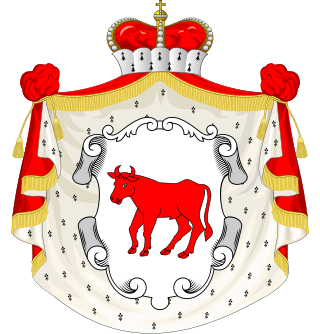
The House of Poniatowski is a prominent Polish family that was part of the nobility of Poland. A member of this family, Stanisław Poniatowski, was elected as King of Poland and reigned from 1764 until his abdication in 1795. Since Polish adjectives have different forms for the genders, Poniatowska is the equivalent name for a female member of this family.

Prince Eustachy Erazm Sanguszko (1768–1844) was a Polish nobleman, general, military commander, diplomat and politician.
This article presents the military ranks of the entire Polish Armed Forces as well as the rank insignia used today. The system of rank insignia is a direct descendant of various systems used throughout history by the Polish Army. Some of the grades trace their name back to the Middle Ages, for instance the rank of chorąży literally means a flag bearer or an Ensign.

Stanisław Lanckoroński was a Polish–Lithuanian magnate as well as a politician and military commander.

The siege of Kolding was fought on December 25, 1658, between Sweden and the forces of the Polish–Lithuanian Commonwealth and Denmark–Norway. The Polish and Danish forces were led by Stefan Czarniecki. The Polish-Danish force won the battle.

The War Order of Virtuti Militari is Poland's highest military decoration for heroism and courage in the face of the enemy at war. It was established in 1792 by the last King of Poland Stanislaus II Augustus and is the oldest military decoration in the world still in use.

The siege of Zbarazh was fought near the site of the present-day city of Zbarazh in Ukraine between the Cossack Hetmanate and Crimean Khanate against the Polish–Lithuanian Commonwealth as a part of the Khmelnytsky Uprising. The siege lasted for seven weeks.
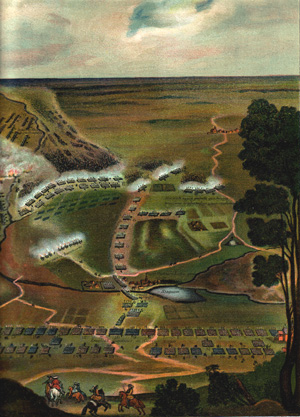
The Battle of Kłecko was fought on May 7, 1656, between forces of the Polish–Lithuanian Commonwealth commanded by Regimentarz Stefan Czarniecki and Jerzy Sebastian Lubomirski and a Swedish force commanded by prince Adolf Johan av Pfalz-Zweibrücken. The Polish–Lithuanian force was more than 12,000 strong and consisted mostly of cavalry, while the Swedes numbered around 7,000 artillery, infantry and cavalry. The Swedes achieved a tactical victory in that they escaped destruction by the Poles, who were unable to get to the Swedish army entrenched behind the Welnianka River, and various ditches and swamps. Swedish army lost 428 dead, while the Polish army sustained 70 dead and wounded, 2,000 dead or 3,000 dead, including 40 companions dead.

The Battle of Khotyn or Battle of Chocim or Khotyn War was a combined siege and series of battles which took place from 2 September to 9 October 1621 between a Polish–Lithuanian Commonwealth, commanded by the Grand Hetman of Lithuania Jan Karol Chodkiewicz, against an invading Ottoman Imperial army, led by Sultan Osman II, which was stopped until the first autumn snows. On 9 October, due to the lateness of the season and heavy losses - due to failed assaults on Commonwealth fortifications - the Ottomans abandoned their siege and the battle concluded with a stalemate, which is reflected in the treaty where some sections favour the Ottomans while others favoured the Commonwealth. Chodkiewicz died on 24 September 1621 shortly before concluding a treaty with the Turks.
The Battle of Kushliki or battle of Kuszliki on 4 November 1661 between a Polish–Lithuanian force and a Russian Tsardom force was one of the battles of the Russo-Polish War (1654–67).

The military of the Polish–Lithuanian Commonwealth consisted of two separate armies of the Kingdom of Poland's Crown Army and the Grand Duchy of Lithuania's Grand Ducal Lithuanian Army following the 1569 Union of Lublin, which joined to form the bi-conderate elective monarchy of the Polish–Lithuanian Commonwealth. The army of each country was commanded by their respective Hetmans. The most unique formation of both armies were the Winged hussars. The Polish–Lithuanian Commonwealth Navy never played a major role and ceased to exist in the mid-17th century.

Juozapas Sapiega (1737-1792) was a Lithuanian nobleman, Great Krajczy of Lithuania, Regimentarz of the Bar Confederation of Lithuania, Marshal of the powiat Wołkowysk during the Bar Confederation.















